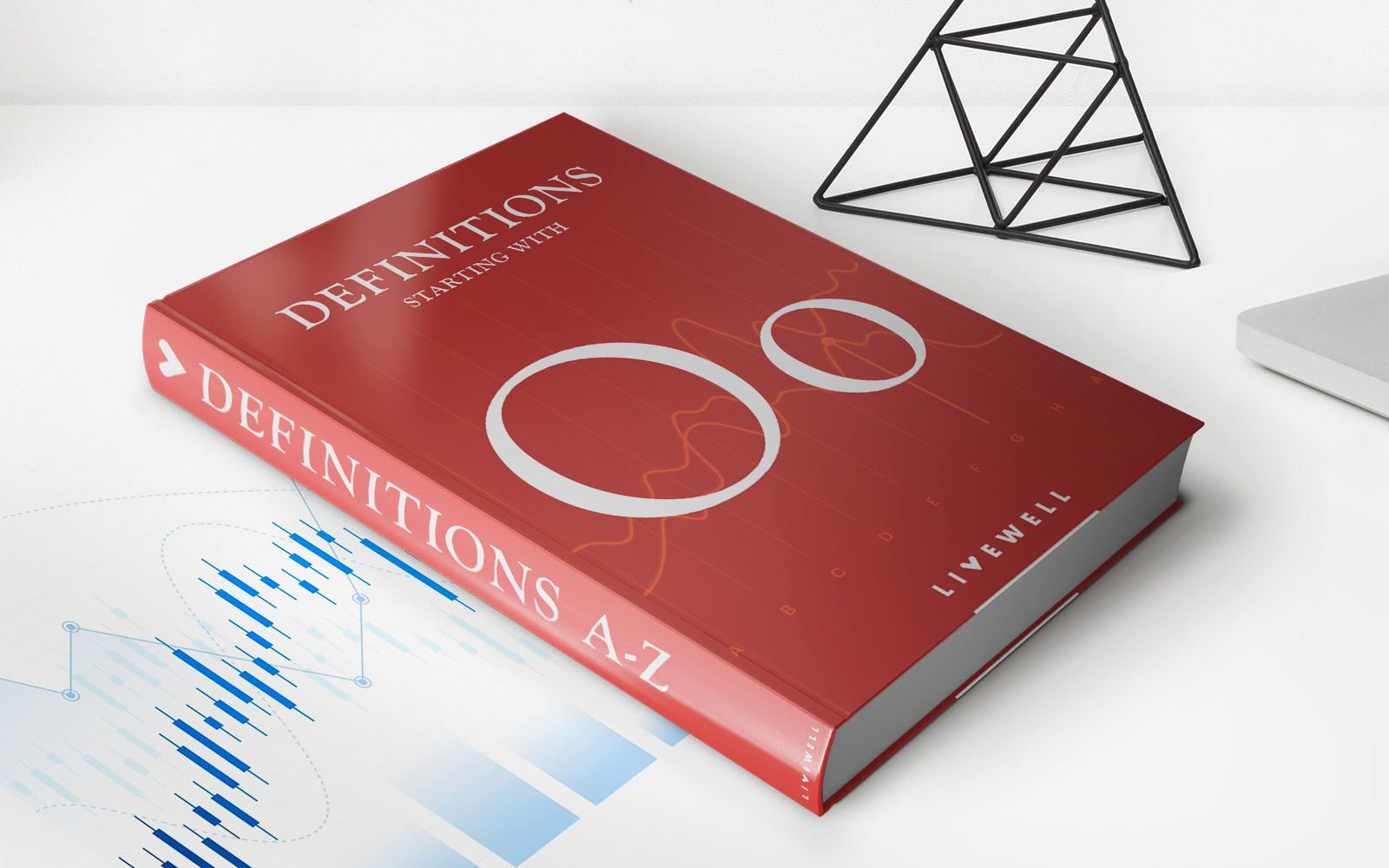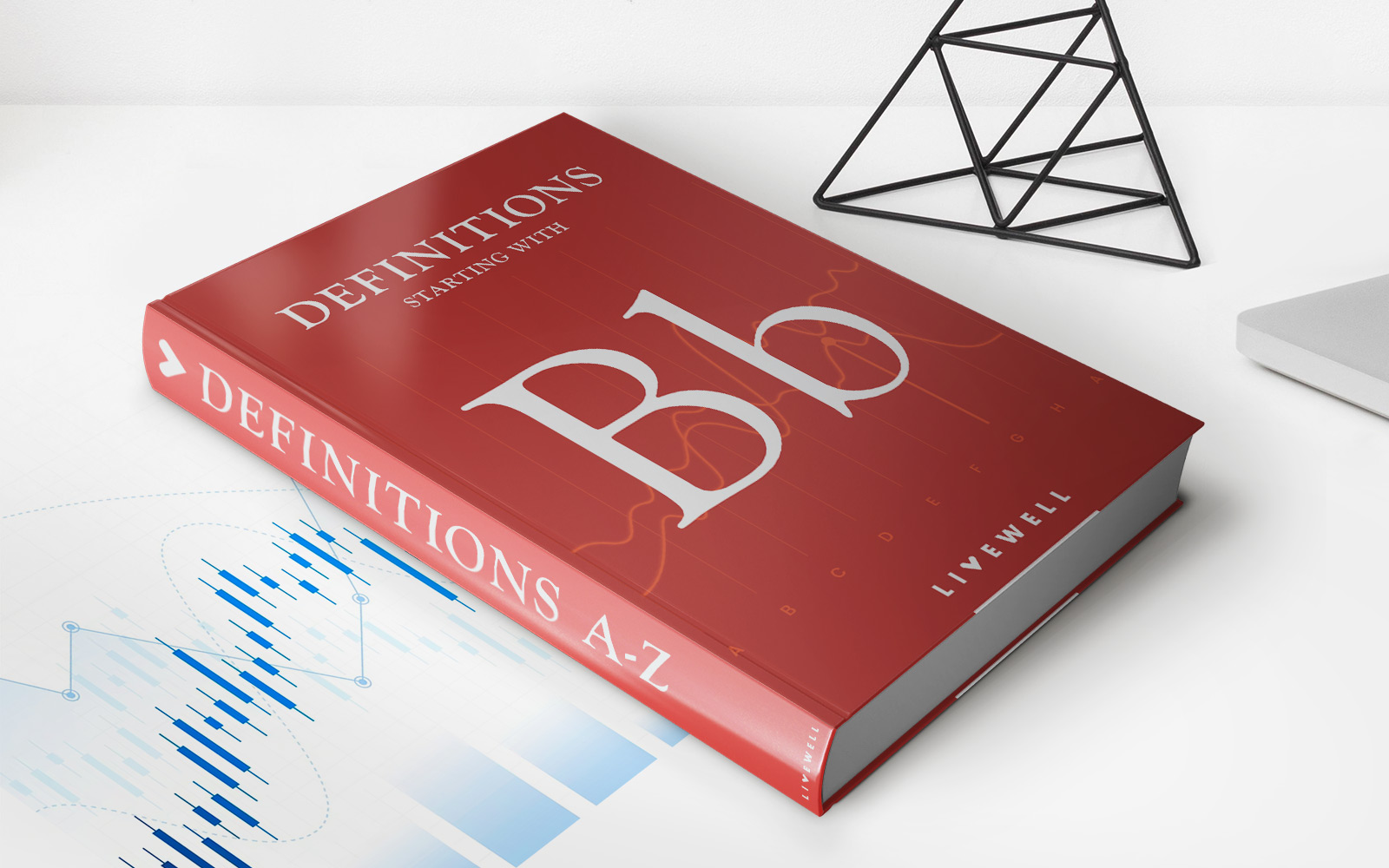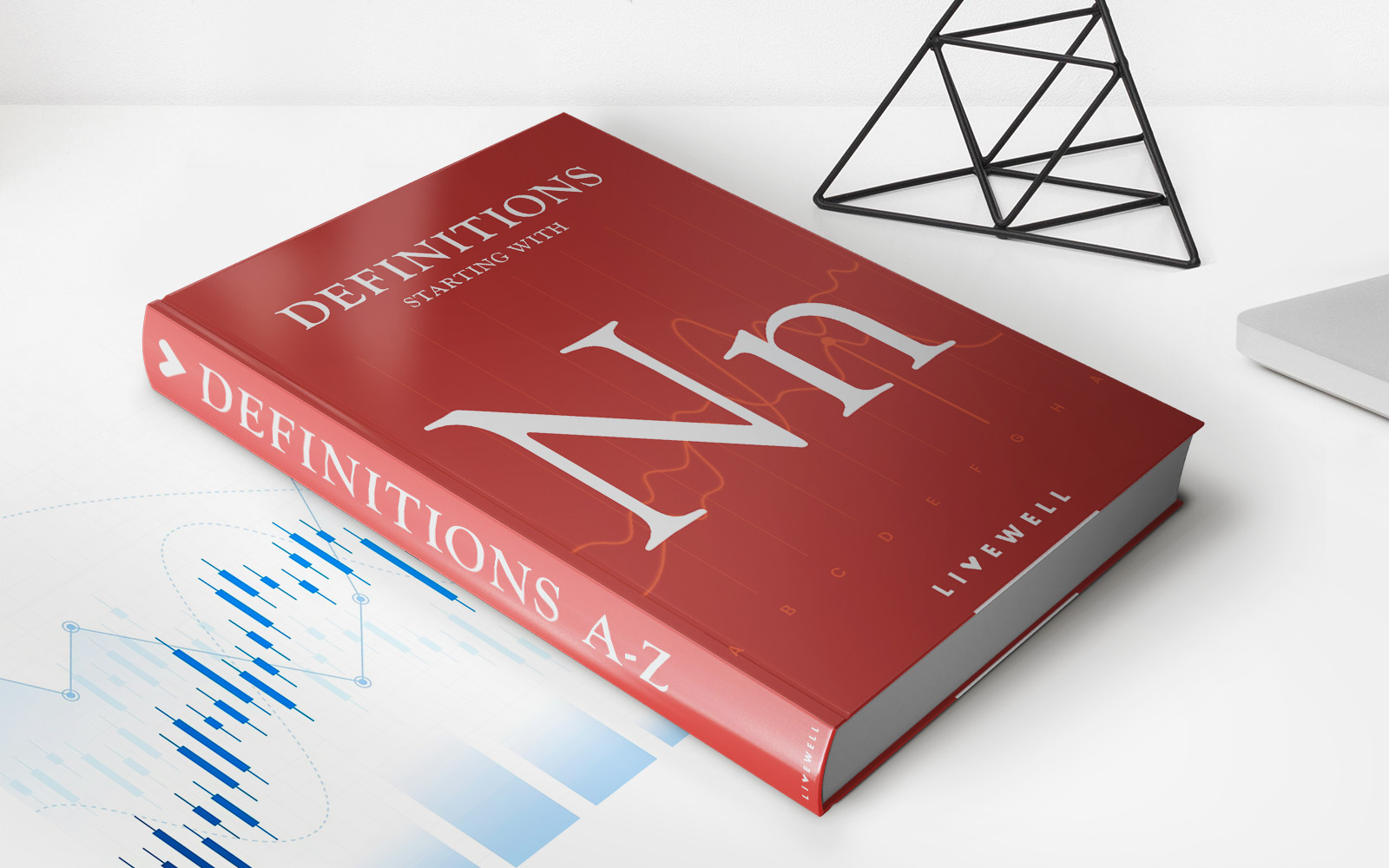

Finance
What Is Broadform Insurance?
Published: November 9, 2023
Learn all about broadform insurance, a type of insurance that provides coverage for multiple assets and liabilities. Get the financial protection you need with broadform insurance.
(Many of the links in this article redirect to a specific reviewed product. Your purchase of these products through affiliate links helps to generate commission for LiveWell, at no extra cost. Learn more)
Table of Contents
Introduction
When it comes to protecting our assets, insurance plays a crucial role. Whether it’s our homes, cars, or businesses, having the right insurance coverage gives us peace of mind and financial security. One type of insurance that you may have come across is broadform insurance. But what exactly is broadform insurance and how does it differ from other types of insurance?
Broadform insurance, also known as named perils insurance, is a comprehensive insurance policy that provides coverage for specific risks or perils that are explicitly listed in the policy. Unlike standard insurance policies that offer all-risk coverage, broadform insurance only covers the perils that are specifically mentioned in the policy documentation.
The breadth of coverage offered by broadform insurance depends on the specific policy and the perils it covers. Common perils covered by broadform insurance include fire, theft, vandalism, lightning strikes, and certain natural disasters. This type of insurance is often used for commercial properties, rental properties, and smaller businesses.
So, why would someone opt for broadform insurance instead of a more comprehensive policy? Well, one reason is that broadform insurance tends to be more affordable compared to all-risk policies. By only covering specific perils, the insurer can offer lower premiums since they are insuring against a limited range of risks.
Another advantage of broadform insurance is that it allows flexibility when it comes to coverage. Policyholders can select the specific perils they want coverage for, tailoring the policy to their individual needs. This targeted approach enables policyholders to save money by excluding perils that are unlikely to occur in their specific situation.
However, it’s essential to note that broadform insurance has its limitations. While it provides coverage for the perils listed in the policy, it does not cover any additional risks that are not explicitly mentioned. This means that if a loss occurs due to a cause not listed in the policy, it will not be covered.
Now that we have a general understanding of broadform insurance, let’s explore the different types of coverage offered under this type of insurance in our next section.
Definition of Broadform Insurance
Broadform insurance, also known as named perils insurance, is a type of insurance policy that provides coverage for specific risks or perils that are explicitly listed in the policy. Unlike standard insurance policies that offer all-risk coverage, broadform insurance only covers the perils that are specifically mentioned in the policy documentation.
With broadform insurance, the coverage is tailored to the specific needs of the policyholder. Instead of providing protection against all potential risks, policyholders can select the perils they want coverage for, allowing for a more targeted and cost-effective approach.
Common perils covered under broadform insurance include fire, theft, vandalism, lightning strikes, and specific natural disasters such as earthquakes or floods. These perils are explicitly listed in the policy, ensuring that policyholders are protected against the specific risks they are most concerned about.
It’s important to note that broadform insurance operates on a “named perils” basis. This means that if a loss occurs due to a cause not listed in the policy, it will not be covered. For example, if a policyholder experiences a loss due to a burst pipe, and water damage is not listed as a covered peril in their policy, the damages may not be covered.
Typically, broadform insurance is used for commercial properties, rental properties, and smaller businesses, although it can also be used for personal homeowner insurance. The coverage and policy terms may vary depending on the insurance provider and the specific needs of the policyholder.
One of the key advantages of broadform insurance is its affordability. Since the coverage is limited to the specific perils chosen by the policyholder, the premiums for broadform insurance policies are often lower compared to comprehensive all-risk policies. This makes it an attractive option for individuals and businesses looking for cost-effective insurance solutions while still ensuring coverage for the perils they are most concerned about.
However, it’s important to carefully consider the risks and potential exclusions of broadform insurance before deciding if it’s the right fit for your needs. Understanding the specific perils covered and those that are excluded is crucial in making an informed decision.
In our next section, we will delve deeper into the different types of coverage offered under broadform insurance policies.
Types of Coverage Offered under Broadform Insurance
When it comes to broadform insurance, policyholders have the flexibility to choose the specific perils they want coverage for. This targeted approach allows individuals and businesses to customize their insurance policy to align with their unique needs and concerns. Here are some common types of coverage offered under broadform insurance:
- Fire: This type of coverage protects against damage or loss caused by fire incidents. It includes both structural damage and damage to personal belongings. Fire coverage is one of the most foundational and essential perils covered under broadform insurance policies.
- Theft: Theft coverage provides protection in the event of stolen property or belongings. It safeguards against losses caused by burglary, robbery, or other unauthorized entry or removal of insured items. Policyholders can choose the level of theft coverage they desire based on their specific concerns and risk assessment.
- Vandalism: Vandalism coverage covers damages resulting from intentional acts of destruction or defacement. This includes graffiti, property damage, or other malicious acts committed by individuals. With vandalism coverage, policyholders are protected against the costs associated with repairing or replacing damaged property.
- Water Damage: Water damage coverage protects against losses caused by water-related incidents such as pipe leaks, burst pipes, roof leaks, or flooding. This coverage helps policyholders mitigate the financial burden of repairing damages and restoring affected areas.
- Natural Disasters: Depending on the geographical location and specific risks involved, broadform insurance may offer coverage for natural disasters such as earthquakes, hurricanes, windstorms, or floods. These perils can cause significant damage and financial loss, so having appropriate coverage is crucial for individuals and businesses in high-risk areas.
- Additional Perils: In addition to the aforementioned perils, broadform insurance may offer coverage for other specific risks based on the policyholder’s needs and preferences. These perils can include lightning strikes, explosions, power surges, falling objects, and more. Policyholders can customize their coverage to protect against the risks that are most relevant to their situation.
It’s important for policyholders to carefully review and understand the specific perils covered under their broadform insurance policy. Each insurance provider may have different coverage options and limitations. Additionally, policyholders should consider any exclusions or deductibles that may apply to the coverage selected.
In the next section, we will explore the benefits and advantages of opting for broadform insurance as a form of protection for your assets.
Benefits and Advantages of Broadform Insurance
Choosing the right insurance coverage is crucial to safeguarding your assets and financial well-being. Broadform insurance offers several benefits and advantages that make it an attractive option for individuals and businesses. Here are some key advantages of broadform insurance:
- Affordability: One of the primary benefits of broadform insurance is its affordability. By providing coverage for specific perils, policyholders can save money on premiums compared to comprehensive all-risk policies. This allows individuals and businesses to obtain the necessary protection without breaking the bank.
- Customization: Broadform insurance offers policyholders the ability to customize their coverage. Instead of a one-size-fits-all approach, individuals and businesses can select the specific perils they want coverage for. This tailored approach ensures that policyholders only pay for the coverage they truly need, making it a cost-effective solution.
- Flexibility: Another advantage of broadform insurance is the flexibility it provides. Policyholders have the freedom to add or remove specific perils from their coverage, allowing them to adapt the policy to their changing circumstances or risk profiles. This flexibility can be especially beneficial for businesses with evolving needs.
- Peace of Mind: Knowing that you have coverage for the specific risks you are most concerned about can provide peace of mind. With broadform insurance, policyholders can feel confident that they have protection against the perils outlined in their policy, such as fire, theft, or vandalism.
- Cost Savings for Lower-Risk Perils: Broadform insurance allows policyholders to exclude coverage for perils that are unlikely to occur in their specific situation. By omitting low-risk perils from their policy, individuals and businesses can save on premiums without jeopardizing coverage for more significant risks.
- Complements Existing Insurance Coverage: Broadform insurance can also be used to supplement existing insurance coverage. For example, if an individual already has comprehensive home insurance but wants additional coverage for specific perils such as earthquakes or floods, broadform insurance can be added on to provide the desired protection.
It’s important to carefully evaluate your insurance needs and consider the potential benefits and advantages of broadform insurance. Consulting with an insurance professional can help you determine if broadform insurance is the right fit for your specific situation.
In the next section, we will explore the drawbacks and limitations of broadform insurance that policyholders should be aware of.
Drawbacks and Limitations of Broadform Insurance
While broadform insurance offers several benefits, it’s important to be aware of its drawbacks and limitations. Understanding these factors can help individuals and businesses make informed decisions when considering broadform insurance. Here are some drawbacks and limitations to consider:
- Limited Coverage: Perhaps the most significant limitation of broadform insurance is its limited coverage. Unlike comprehensive all-risk policies, which provide coverage for a wide range of perils, broadform insurance only covers the specific perils listed in the policy. This means that if a loss occurs due to a cause not listed, it will typically not be covered.
- Potential Coverage Gaps: Due to the limited scope of coverage, there is a risk of coverage gaps with broadform insurance. Policyholders must ensure that the perils they are most concerned about are included in the policy. Any perils omitted from the coverage may leave gaps in protection if a loss or damage occurs due to an excluded cause.
- Lack of Convenience: Customizing the coverage to include specific perils requires careful consideration and may require more effort on the part of the policyholder. Comparatively, comprehensive all-risk policies provide a more comprehensive and convenient solution by offering coverage for a broader range of risks without the need for customization.
- Difficulty in Assessing Risks: Determining the likelihood of various perils can be challenging, especially for individuals or businesses without insurance expertise. It may be difficult to accurately assess the risks and select the appropriate perils to include in the broadform insurance policy, potentially resulting in either unnecessary coverage or inadequate protection.
- Limited Reimbursement: Broadform insurance policies generally have set limits on coverage amounts for each specific peril. If the value of the loss exceeds the coverage limit, the policyholder may bear the additional costs out of pocket. It’s important to carefully review the policy limits and ensure they align with your risk exposure.
- Exclusions and Deductibles: Like any insurance policy, broadform insurance may have exclusions and deductibles that policyholders should be aware of. Exclusions specify scenarios or circumstances in which coverage will not apply, while deductibles are the out-of-pocket expenses policyholders must pay before the insurance coverage kicks in.
Despite these drawbacks and limitations, broadform insurance can still be a viable option for individuals and businesses looking for specialized coverage at a more affordable cost. It’s essential to carefully review policy terms, assess your specific needs and risks, and consider the potential limitations before purchasing broadform insurance.
In the next section, we will explore some important factors to consider before purchasing broadform insurance.
Factors to Consider before Purchasing Broadform Insurance
Before purchasing broadform insurance, it’s essential to consider several factors to ensure you make the right decision for your insurance needs. Here are some key factors to keep in mind:
- Risk Assessment: Conducting a thorough risk assessment is crucial when selecting the perils to include in your broadform insurance policy. Consider the specific risks you are most concerned about and the likelihood of those risks occurring in your area. This will help you determine the appropriate coverage and ensure you are adequately protected.
- Policy Exclusions: Carefully review the policy documentation to understand any exclusions or circumstances in which coverage will not apply. It’s important to be aware of any limitations that may impact your coverage and to assess if they align with your risk profile and needs.
- Policy Limits: Review the policy limits for each covered peril to ensure they align with the potential financial impact of a loss. Consider the value of your assets and the potential costs involved in repairing or replacing them. Adjust the coverage limits accordingly to ensure adequate protection.
- Deductibles: Take note of the deductibles associated with the broadform insurance policy. A deductible is the amount you must pay out of pocket before the insurance coverage kicks in. Ensure that the deductibles are manageable for your budget and align with your financial capabilities.
- Existing Insurance Coverage: If you already have other insurance policies in place, such as comprehensive home insurance or business insurance, evaluate whether broadform insurance complements your existing coverage or duplicates protection. Make sure there are no overlaps or gaps in coverage.
- Cost and Affordability: While broadform insurance is generally more affordable than all-risk policies, it’s still important to consider the cost of premiums and ensure they fit within your budget. Compare quotes from different insurance providers to find the best balance between coverage and affordability.
- Expert Advice: Seeking guidance from an insurance professional can provide valuable insights when considering broadform insurance. An experienced insurance agent or broker can help assess your specific needs, recommend appropriate coverage options, and provide clarity on the policy terms and conditions.
Considering these factors and thoroughly evaluating your insurance needs will help you make an informed decision when purchasing broadform insurance. Remember that insurance is meant to provide financial protection, so it’s crucial to select the coverage that best aligns with your unique circumstances and risk exposure.
In the next section, we will explore how to obtain broadform insurance and the steps involved in the process.
How to Obtain Broadform Insurance
If you’ve determined that broadform insurance is the right fit for your insurance needs, here’s a step-by-step guide on how to obtain this type of coverage:
- Evaluate Your Insurance Needs: Before starting the process, assess the specific perils you want coverage for. Consider your risk profile, the value of your assets, and any potential vulnerabilities that need protection.
- Research Insurance Providers: Look for reputable insurance providers that offer broadform insurance. Compare their coverage options, policy terms, rates, and customer reviews to find a provider that fits your needs.
- Request Quotes: Reach out to the selected insurance providers and request quotes for broadform insurance. Provide them with the necessary information, such as the location of the insured property, the coverage limits you desire, and any other relevant details.
- Review Policy Terms: Carefully review the policy terms and conditions provided by each insurer. Pay close attention to the covered perils, exclusions, deductibles, and any other relevant policy limitations. Ensure that the policy aligns with your needs and expectations.
- Consult with an Insurance Professional: If needed, consult with an insurance agent or broker to seek professional advice. They can help clarify any questions or concerns you have regarding broadform insurance and ensure you make an informed decision.
- Choose the Right Policy: Select the broadform insurance policy that best meets your needs and offers the necessary coverage options. Consider the cost of premiums, the deductible amount, and the reputation of the insurance provider.
- Provide Required Information: Complete the necessary paperwork and provide the insurer with any requested documentation. This may include property details, proof of ownership, or any other information required to initiate the coverage.
- Pay the Premium: Once all the necessary documentation is submitted, pay the premium for your broadform insurance policy. Ensure that you understand the payment schedule and any applicable fees or charges.
- Receive Policy Documentation: After the premium is paid, you will receive your policy documentation, outlining the perils covered, the policy limits, and any other important details. Keep this documentation in a safe place for future reference.
- Renew and Review Annually: Review your broadform insurance policy annually to ensure that it still aligns with your needs. Make any necessary updates or adjustments to your coverage to account for any changes in your risk profile or asset value.
Following these steps will help you obtain broadform insurance and provide the necessary protection for your assets against the specific risks you have chosen to include in your policy.
In the final section, we will summarize the key points discussed in this article.
Conclusion
Broadform insurance, also known as named perils insurance, provides coverage for specific risks or perils that are explicitly listed in the policy. It offers a cost-effective and customizable solution for individuals and businesses looking to protect their assets without paying for coverage they don’t need.
By selecting the perils they want coverage for, policyholders can tailor their broadform insurance policy to their unique needs and risk profiles. Whether it’s protection against fire, theft, vandalism, water damage, or specific natural disasters, broadform insurance allows policyholders to focus on the risks they are most concerned about.
While broadform insurance offers several benefits, it’s crucial to be aware of its limitations. The coverage is limited to the perils explicitly listed, and any losses caused by excluded causes will not be covered. Policyholders must carefully review the policy terms, exclusions, deductibles, and policy limits to ensure adequate protection.
When considering broadform insurance, it’s important to conduct a risk assessment, evaluate existing insurance coverage, and seek advice from an insurance professional if needed. By understanding your specific needs and potential vulnerabilities, you can make an informed decision when selecting broadform insurance.
To obtain broadform insurance, research reputable insurance providers, request quotes, review policy terms, and provide the necessary information. Once you’ve chosen the right policy, pay the premium and receive your policy documentation. Remember to review and renew your coverage annually to ensure it continues to meet your needs.
In conclusion, broadform insurance offers a tailored and affordable option for individuals and businesses looking for specific peril coverage. By carefully considering your risks, policy terms, and coverage options, you can obtain the right broadform insurance policy to protect your assets and provide peace of mind.














